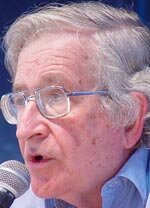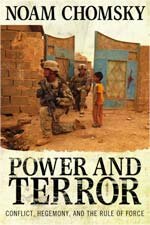By Richard Gazarik, Tribune-Review – 11 June 2010
www.pittsburghlive.com/x/valleynewsdispatch/s_685551.html
A recently declassified federal report bolsters a long-simmering Cold War theory that uranium was illegally shipped from an Armstrong County plant in 1965 to Israel to support its nuclear arms efforts.
The once-secret report by the General Accounting Office reveals the FBI initially refused to investigate the disappearance of 206 pounds of weapons-grade uranium-235 from the Nuclear Materials and Equipment Corp. — known as NUMEC — in Apollo.
That refusal led to widespread speculation the uranium, enough to build five nuclear weapons, was diverted to Israel with covert U.S. government assistance, the report states.
For decades, the fate of the missing NUMEC uranium has been the stuff of Western Pennsylvania legend.
Stories were spun — some based on fact, some based purely on conjecture — and books were penned about how the uranium vanished.
The release of this once top-secret report gives the first official glimpse into the government’s handling of “The Apollo Affair.”
In the late 1970s, the federal Nuclear Regulatory Commission reported there was “no evidence” to conclude the uranium was shipped to Israel. But the declassified report states that GAO investigators thought the commission’s findings should have been “reconsidered.”
Dr. Victor Gilinsky, a commissioner with the Nuclear Regulatory Commission in the 1980s, said although the GAO report is not a “smoking gun,” it could lead to the conclusion that the material ended up in Israel.
“It does look as if the government didn’t want any information coming out on that,” said Gilinsky, who lives in Southern California and works as an energy consultant. “It looked like it was taken to Israel, but exactly what for, we just don’t know.”
Uranium-235 can be used in making nuclear weapons because of its ability to sustain the fission chain reaction of a nuclear explosion. The Department of Energy sold the material to NUMEC for research purposes.
The Beginning
Pittsburgh chemist Zalman Shapiro, 90, of Oakland founded NUMEC in the early 1960s on the site of the former Apollo Steel Co. to reprocess spent nuclear fuel rods.
Shapiro did not respond to requests for comment about the declassified report, but in 1978 he told the House Committee on Interior and Insular Affairs that no material was diverted from NUMEC.
“I have no knowledge or information concerning any such diversion,” he said. “Furthermore, I am not aware of any factual basis for the repeated allegations that ‘material unaccounted for’ at NUMEC was caused by an illegal diversion.”
Attorney Hadrian Katz, a partner in the firm of Arnold & Porter in Washington, D.C., said he used to work for Shapiro in the 1970s and said Shapiro is a loyal American and never diverted any uranium to Israel.
“Nobody thought Zal Shapiro ever diverted uranium,” Katz said. “Nobody who knew him thought he was involved in a diversion. There’s nothing there. There was no diversion. Zal made real contributions to nuclear research. Zal is a great American.”
A staunch supporter of Israel, Shapiro, whose father was an Orthodox rabbi who lost family in the Holocaust, was a purchasing agent for the Israel Defense Ministry, the report states.
Shapiro, an active inventor who received a patent from the government last year for a process to make artificial diamonds, maintained the uranium was “lost” in the processing system. Traces of enriched uranium were discovered in cracks and crevices of the plant and in air filters, according to the report.
Skeptics doubted Shapiro’s theory, and in 1966, NUMEC paid the Energy Department $1.1 million for the missing uranium, the report states. Energy Department inspectors said the amount of missing uranium actually went well beyond 206 pounds, according to the report.
In the 1960s, inspectors found “significant deficiencies” in how the uranium was stored, protected and tracked at NUMEC, the report stated. The deficiencies were so serious that officials recommended the government stop providing uranium to the company. But the shipments were not halted, the report states.
Inspectors said NUMEC had the largest highly enriched uranium inventory loss of all U.S. commercial sites, with a 590-pound loss reported before 1968 and 170 pounds after that year, according to the GAO findings.
The Investigation
Energy officials asked the FBI to investigate NUMEC, but the bureau refused until 13 years later, when then-President Gerald Ford ordered an investigation, the report indicates.
Gilinsky said that when he was at the regulatory commission, the Justice Department wrote to the Ford administration that people in government were “accessories after the fact.”
Gilinsky said the uranium could have been used to make nuclear weapons, but had other possible uses.
He said the Israelis could have used the material at the nation’s best-known reactor at Dimona to produce plutonium-239 and tritium, other materials used to power nuclear and/or thermonuclear weapons. This method would have enabled Israeli scientists to produce more weapons than if they had used the enriched uranium directly.
For years, Israel has not officially admitted to having nuclear weapons, but it is widely believed the country has actively developed a nuclear arsenal for some time.
Dennis Gormley, of the Matthew B. Ridgway Center for International Studies at the University of Pittsburgh, said he’s certain Israel is a nuclear power. The question is whether its nuclear program was spawned by the missing uranium from NUMEC, he said.
“No question whatsoever that Israel has the bomb,” Gormley said. “It’s a 100-percent certainty.”
He said efforts to trace the missing material during the Carter administration were stymied by problems such as the Iranian hostage crisis and the Soviet invasion of Afghanistan.
“Carter didn’t need any more on his plate,” Gormley said.
The FBI and CIA blocked efforts to release the GAO report in 1978, the report states. Even today, portions were blacked out for security reasons.
The Haunting Legacy
NUMEC’s legacy has haunted the region for decades.
Nearby residents endured 14 years of litigation seeking damages for cancer and other illnesses they contend were caused by radiation exposure.
Federal investigators said NUMEC workers likely faced dangers from radiation at the plant, but could not determine the level of exposure, according to a government report.
Atlantic Richfield acquired NUMEC in 1967, and Babcock & Wilcox bought it in 1971. The plant closed in 1983 and was razed.
The complete IOA coverage of Israel’s involvement in nuclear warfare






































